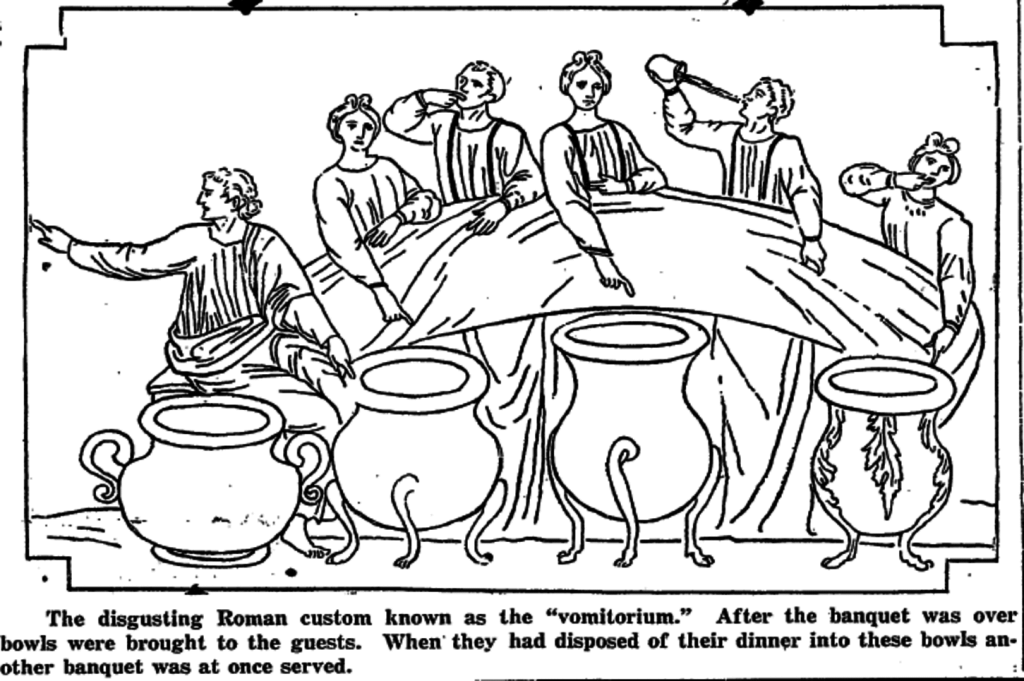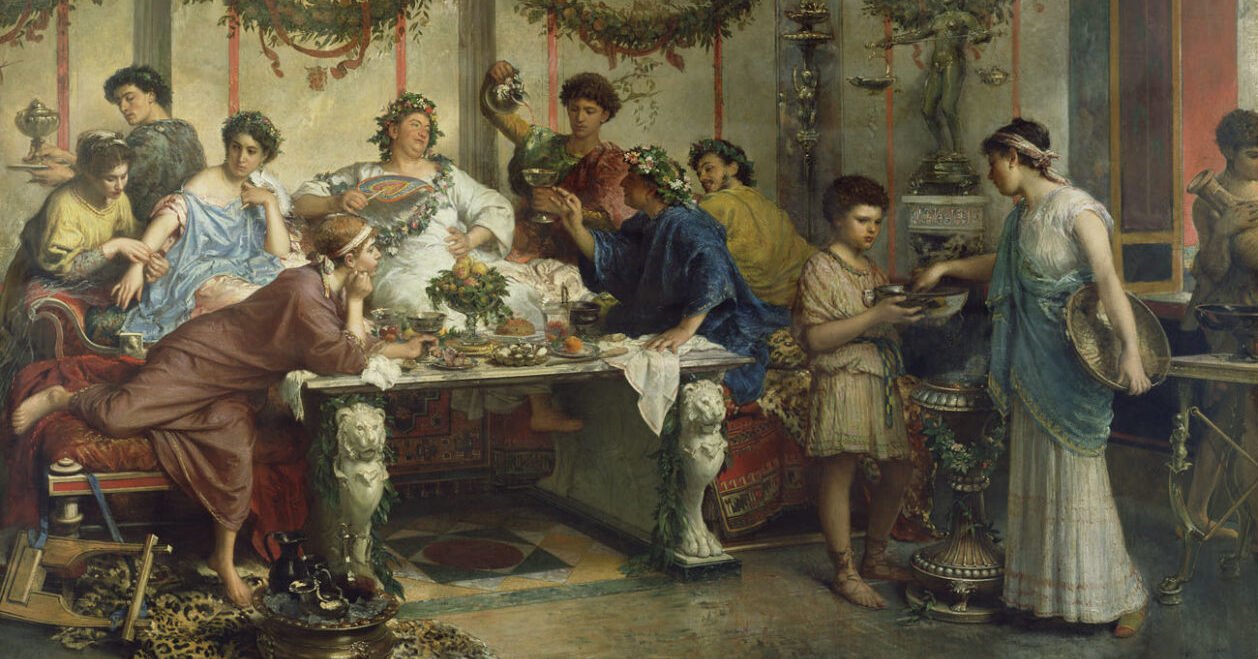There is a widespread belief that a Roman aristocrat could go to a special room during a meal, “cleanse” his stomach in a very simple way, and return to continue the feast. We checked how reliable this statement is.
Some believe that in Roman halls there were special small rooms called vomitoriums for holding ceremonial receptions. Guests who had eaten and drunk could retreat to such a room at any time, regurgitate their food and return to a sumptuous meal. A less exotic version is also common: the guests “emptied themselves” right in the hall - in supplied under the table or offered slaves to the bowl.
Let's start with the version about the special room. The confusion arose due to a peculiar “false friend of the translator.” In English, “vomiting” is vomit. This is the word is happening from the Latin root with a slightly broader meaning - “to spew”, “to pour out”. Vomitoriums are not vomiting rooms at all, but passages under or behind tiers of seats in a Roman theater or stadium. They were built so that spectators could enter or leave the arena as quickly as possible - the stream of people seemed to erupt, hence the name.
The word vomitorium appeared later than such passages - it was first fix only at the end of the 4th century. Apparently, the name was “invented” by the writer Macrobius - in his “Saturnalia” he used a neologism, combining the adjective vomitus and the letter combination orium, which was used to designate some places. The resulting beautiful image took root, and many centuries later began to mislead people.

Historian Sarah Bond of the University of Iowa assumes, that a false interpretation of the word could have appeared at the turn of the 19th–20th centuries. At that time, everyone who received a classical education was well acquainted with ancient literature, including descriptions of Roman aristocrats whose lives were full of excesses. At the same time, as Bond notes, these ancient texts exaggerate reality - either for edifying purposes or for satirical ones.
Often one of the first mentions of the vomitorium is as a place for vomiting. called fragment from Aldous Huxley's story "The Jester's Round Dance" (1923). Researchers from the University of Queensland discovered earlier evidence. In 1871, the French politician and journalist Félix Pyat described the British Christmas meal as “a rude, pagan, monstrous orgy—a Roman feast in which there is no lack of vomitorium.” In the same year, Augustus Hare in "Walks in Rome" described a room adjoining the dining room in the Flavian Palace. He suggested that it was a vomitorium (precisely in the incorrect sense of "a place for vomiting"), and called it "a disgusting monument of Roman life."
Sometimes the term vomitorium was applied to something other than the building - in 1916, The Washington Post wrote: called the “disgusting tradition” when, after a feast, guests were brought cups for vomiting. When the procedure was completed, new dishes were set on the table.

Stories about continuous streams of vomit at Roman feasts, according to researchers, are, at the very least, greatly exaggerated. Food historian Patrick Faas emphasizes: “There is no reason to believe that the Romans did this much more often than modern people.” He draws attention to the fact that fragments from Seneca, Suetonius and other authors that have become popular are dedicated to emperors who behaved inappropriately, but it is not entirely justified to extrapolate their actions to the entire Roman nobility. Faas urges us not to forget that vomiting was often not caused on purpose - its cause, as often in our days, was alcohol abuse. Similar opinion adhere to and other specialists.
Not true
- Scientific American. Purging the Myth of the Vomitorium
- C. Davenport & S. Malik. Mythbusting Ancient Rome – the truth about the vomitorium
- P. Faas. Around the Roman Table
If you find a spelling or grammatical error, please let us know by highlighting the error text and clicking Ctrl+Enter.







